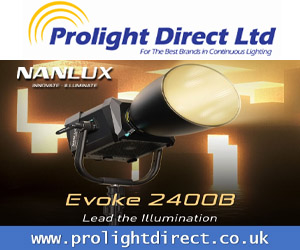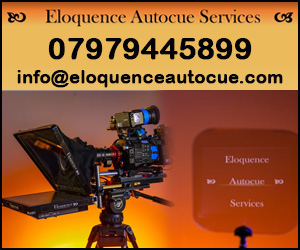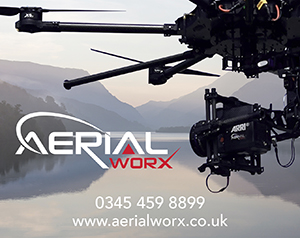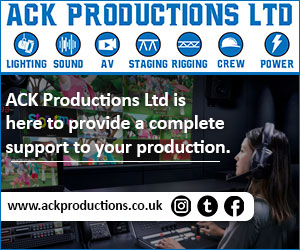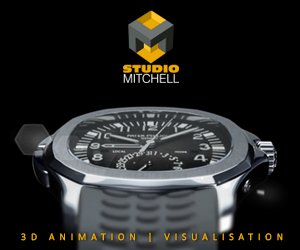Broadcast News
17/11/2015
Studio Lighting With Prolight Direct

Traditionally Film and TV studios used tungsten lights to light their studios, says Ossie Jung, Prolight Direct.
Thirty years ago this was the only option and the norm, the down side was that these lights consumed huge amounts of electricity and generated immense heat which in turn necessitated the use of air condition units which in turn consumed even more electricity. The whole system was inefficient and extremely costly. These studios also needed to dedicate a room just to accommodate dimming systems which were very costly to procure and run.
Around 20 years ago, a German gaffer working in LA took a very problematic light source the fluorescent bulb and with a lot of dedication redeveloped it to work in the film and TV lighting fixture and thus Kino Flo was born. Anyone working in the film industry at the time will remember this as being one of the technical revolutions that alongside increasingly faster film stocks fundamentally changed how moving images were created.
At the beginning of the 1990s Kino flo fixtures started to be widely used in TV studios around the world, they produce a beautiful soft controllable source of light that made talent look great – and on top of that they were a revolution in terms of space, rig ability, heat and energy consumption. Producers were also happy at the reduced running costs, not to mention the greatly reduced need for air con and quicker more efficient rigging demands. Also the dimmers rooms became redundant thus freeing up much needed space.
As fluorescent technology advanced much more sophisticated fixtures were developed which not only produced beautiful soft light but also projected punch light thus providing studios with a complete compliment of fluorescent lights for every need.
As you can see from the example below Fluorescent fixtures can be used as key lights, fill lights and back lights. They are also ideal for lighting cycloramas and green screens.
Also with cameras being so sensitive these days having base ISO of 800+ the need for powerful lights is negated.
For special effect shots specially spiked green and blue tubes also revolutionised post production times as the background screens became more accurate and spectrally cleaner.
Occasionally a hard point source of light is needed and for these cases the Dedo DLH4 is the ideal instrument, the version DLH4 300SEDMX is the ideal fixture as it has on board dimming and DMX.
In the last few years the advent of LED has taken the market by storm and people are using LED for everything, however LED does have its limitations, up until recently most LEDs had incomplete spectrum of light, especially in the R9 and R13 range which is coincidentally the best range for skin tones therefore most LEDs would reproduce muted and dull skin tones which is not ideal in any scenario. Even today there are a lot of fixtures that do not have good R9 and R13 results.
The last thing you want to do is kit out your studio in LEDS and then find out that you can't get good skin tones with what you've got.
My advice when kiting out your studios is to do your research well, one piece of advice is to stick with the well-known brands. ARRI have the L series which are Fresnel replacements they produce a good quality light. They also now have the ARRI Sky which is incredibly bright but with a hefty price tag to match.
Kino flo have their Celeb range the Celeb 400 and 400Q have a broad surface area thus producing the traditional kino flo beauty light.
Also when you want that point source of light Dedo now do a whole range of lights from the DLED 2 to the DLED 12, all with Dedos academy award winning aspheric optics.
However as we know LED technology is moving at a fast pace and however great the Kino Flo Celeb and ARRI Sky are they are heavy bulky fixtures and pricey.
My tip for the future is a fixture I saw on the Kino Flo stand at IBC in Amsterdam this September. This new Kino Flo line called the "Select" has all the advantages of the original Kino Flo system that revolutionised lighting all those years ago but with the added advantage of high quality LEDs, These fixtures do it without sacrificing any quality and the new range is lightweight compact and versatile – and they can also run off batteries if you ever need to take them on location.
Following on in the Kino Flo tradition all the new fixtures come in the well-loved original Kino Flo housings offering the control of having barn doors, honey combes and the option of DOP choice soft boxes.
With this new Kino Flo range in combination with the new Dedo focusing lights studio lighting designers now have all the tools needed to light studios with extremely efficient, versatile and affordable lights.
Even in the movie industry Kino flows are used extensively for lighting sets. The fact that you don't have to run each individual light back to an expensive dimmer saves hugely on rigging and de rigging times and the reduced power consumption, heat generated all goes towards savings for production companies.
This article is also available to read at BFV online.
www.prolightdirect.co.uk
(JP/LM)
Thirty years ago this was the only option and the norm, the down side was that these lights consumed huge amounts of electricity and generated immense heat which in turn necessitated the use of air condition units which in turn consumed even more electricity. The whole system was inefficient and extremely costly. These studios also needed to dedicate a room just to accommodate dimming systems which were very costly to procure and run.
Around 20 years ago, a German gaffer working in LA took a very problematic light source the fluorescent bulb and with a lot of dedication redeveloped it to work in the film and TV lighting fixture and thus Kino Flo was born. Anyone working in the film industry at the time will remember this as being one of the technical revolutions that alongside increasingly faster film stocks fundamentally changed how moving images were created.
At the beginning of the 1990s Kino flo fixtures started to be widely used in TV studios around the world, they produce a beautiful soft controllable source of light that made talent look great – and on top of that they were a revolution in terms of space, rig ability, heat and energy consumption. Producers were also happy at the reduced running costs, not to mention the greatly reduced need for air con and quicker more efficient rigging demands. Also the dimmers rooms became redundant thus freeing up much needed space.
As fluorescent technology advanced much more sophisticated fixtures were developed which not only produced beautiful soft light but also projected punch light thus providing studios with a complete compliment of fluorescent lights for every need.
As you can see from the example below Fluorescent fixtures can be used as key lights, fill lights and back lights. They are also ideal for lighting cycloramas and green screens.
Also with cameras being so sensitive these days having base ISO of 800+ the need for powerful lights is negated.
For special effect shots specially spiked green and blue tubes also revolutionised post production times as the background screens became more accurate and spectrally cleaner.
Occasionally a hard point source of light is needed and for these cases the Dedo DLH4 is the ideal instrument, the version DLH4 300SEDMX is the ideal fixture as it has on board dimming and DMX.
In the last few years the advent of LED has taken the market by storm and people are using LED for everything, however LED does have its limitations, up until recently most LEDs had incomplete spectrum of light, especially in the R9 and R13 range which is coincidentally the best range for skin tones therefore most LEDs would reproduce muted and dull skin tones which is not ideal in any scenario. Even today there are a lot of fixtures that do not have good R9 and R13 results.
The last thing you want to do is kit out your studio in LEDS and then find out that you can't get good skin tones with what you've got.
My advice when kiting out your studios is to do your research well, one piece of advice is to stick with the well-known brands. ARRI have the L series which are Fresnel replacements they produce a good quality light. They also now have the ARRI Sky which is incredibly bright but with a hefty price tag to match.
Kino flo have their Celeb range the Celeb 400 and 400Q have a broad surface area thus producing the traditional kino flo beauty light.
Also when you want that point source of light Dedo now do a whole range of lights from the DLED 2 to the DLED 12, all with Dedos academy award winning aspheric optics.
However as we know LED technology is moving at a fast pace and however great the Kino Flo Celeb and ARRI Sky are they are heavy bulky fixtures and pricey.
My tip for the future is a fixture I saw on the Kino Flo stand at IBC in Amsterdam this September. This new Kino Flo line called the "Select" has all the advantages of the original Kino Flo system that revolutionised lighting all those years ago but with the added advantage of high quality LEDs, These fixtures do it without sacrificing any quality and the new range is lightweight compact and versatile – and they can also run off batteries if you ever need to take them on location.
Following on in the Kino Flo tradition all the new fixtures come in the well-loved original Kino Flo housings offering the control of having barn doors, honey combes and the option of DOP choice soft boxes.
With this new Kino Flo range in combination with the new Dedo focusing lights studio lighting designers now have all the tools needed to light studios with extremely efficient, versatile and affordable lights.
Even in the movie industry Kino flows are used extensively for lighting sets. The fact that you don't have to run each individual light back to an expensive dimmer saves hugely on rigging and de rigging times and the reduced power consumption, heat generated all goes towards savings for production companies.
This article is also available to read at BFV online.
www.prolightdirect.co.uk
(JP/LM)
More Broadcast Lighting Equipment Stories
01/04/2019
WORK PRO Upgrades Its LightShark DMX-Based Hardware Lighting Console
WORK PRO has announced a significant software upgrade for its LightShark DMX-based hardware lighting console, resulting in major improvements to its f
WORK PRO Upgrades Its LightShark DMX-Based Hardware Lighting Console
WORK PRO has announced a significant software upgrade for its LightShark DMX-based hardware lighting console, resulting in major improvements to its f
28/09/2018
Kino Flo Debuts New L80 And L40 LED Image Fixtures At IBC 2018
Kino Flo Lighting Systems unveiled the new L80 and L40 LED Image fixtures at the IBC show in Amsterdam. The new style Image LED fixtures appear outwar
Kino Flo Debuts New L80 And L40 LED Image Fixtures At IBC 2018
Kino Flo Lighting Systems unveiled the new L80 and L40 LED Image fixtures at the IBC show in Amsterdam. The new style Image LED fixtures appear outwar
10/04/2018
Lights, Camera… Hollywood Glamour Meets 1970s Liverpool
Whether you're watching a post-apocalyptic thriller, film noir, or period drama, lighting is one of the elements that helps convince you of what you'r
Lights, Camera… Hollywood Glamour Meets 1970s Liverpool
Whether you're watching a post-apocalyptic thriller, film noir, or period drama, lighting is one of the elements that helps convince you of what you'r
12/03/2018
LED Creative Styles BRITs Official After Party
LED Creative has worked alongside Lighting Designer (LD) Stuart Pring to provide light installations for the BRITs after party. LED Creative used its
LED Creative Styles BRITs Official After Party
LED Creative has worked alongside Lighting Designer (LD) Stuart Pring to provide light installations for the BRITs after party. LED Creative used its
07/03/2018
In Depth With Gavo Light
Gavo Lighting are revolutionising the market when it comes to plasma lighting. Having recently exhibited the Gavo Light, the team tell us about its su
In Depth With Gavo Light
Gavo Lighting are revolutionising the market when it comes to plasma lighting. Having recently exhibited the Gavo Light, the team tell us about its su
20/02/2018
LED Creative Add Sparkle To Dancing On Ice
LED Creative has provided more than 1,600 metres of their Alpha 60 RGB system, as well as an additional 75 metres of their Sigma 60, for the new serie
LED Creative Add Sparkle To Dancing On Ice
LED Creative has provided more than 1,600 metres of their Alpha 60 RGB system, as well as an additional 75 metres of their Sigma 60, for the new serie
16/02/2018
In Conversation With Gavo Lighting
Your stand was buzzing at BSC; what was the greatest talking point? Visitors to our stand at the BSC show were curious at first and blown away second.
In Conversation With Gavo Lighting
Your stand was buzzing at BSC; what was the greatest talking point? Visitors to our stand at the BSC show were curious at first and blown away second.
05/12/2017
Purify Lighting With Remote Phosphor From BB&S
The popularity of LED-based fixtures has grown enormously in a short period – owing to its 'bang for buck' in terms of quality versus investment. Howe
Purify Lighting With Remote Phosphor From BB&S
The popularity of LED-based fixtures has grown enormously in a short period – owing to its 'bang for buck' in terms of quality versus investment. Howe
13/10/2017
What Makes A Professional Light?
At IBC last month, it was eye-opening how many lighting manufacturers were exhibiting – not least because of their bright booths! This influx of new m
What Makes A Professional Light?
At IBC last month, it was eye-opening how many lighting manufacturers were exhibiting – not least because of their bright booths! This influx of new m
10/10/2017
The Making Of 'Fire And Iron'
I've been shooting with the Fujinon MK18-55mm lens on my PXW-FS7 and PXW-FS5 since the lens was launched. I absolutely love this lens, but one thing h
The Making Of 'Fire And Iron'
I've been shooting with the Fujinon MK18-55mm lens on my PXW-FS7 and PXW-FS5 since the lens was launched. I absolutely love this lens, but one thing h





